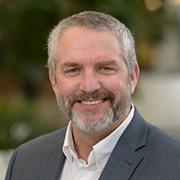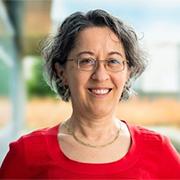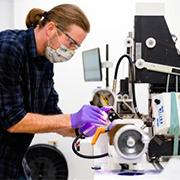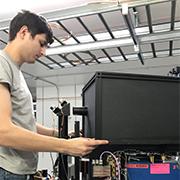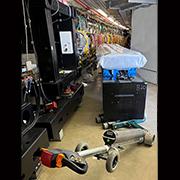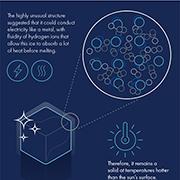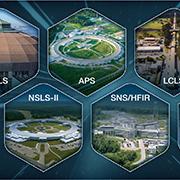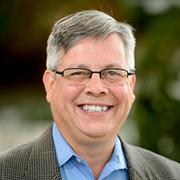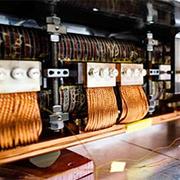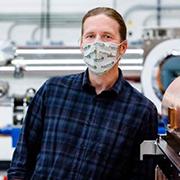2022
Jim Kerby has been named project director of the APS Upgrade Project, effective Monday, April 25, 2022, making permanent a role he has held on an interim basis since December 2021.
Kathy Harkay was there at the start of the APS, working to determine the limits of what the machine could do. Now she’s working on upgrading the facility, and is looking forward to test-driving the new APS.
Zhi Qiao of the Advanced Photon Source X-ray Science Division is one of 11 postdoctoral appointees at the U.S. Department of Energy’s Argonne National Laboratory to receive a 2021 Postdoctoral Performance Award that recognizes their contributions to the Laboratory’s pivotal discoveries.
Just as chefs in a Michelin-starred restaurant collaborate to produce haute cuisine, engineers at the U.S. Department of Energy’s Advanced Photon Source at Argonne National Laboratory work together to create a similarly refined product: an upgraded facility that will drive the future of x-ray science, resulting in breakthroughs that make us better off and more secure.
The American Physical Society has awarded Ihar Lobach its 2022 Outstanding Doctoral Thesis Research in Beam Physics Award. Lobach conducted his thesis research at the U.S. Department of Energy’s Fermi National Accelerator Laboratory and has begun his postdoctoral appointment at the Advanced Photon Source.
Mathew Cherukara of the U.S. Department of Energy’s Advanced Photon Source is featured this week in “Light Source Selfies,” a reoccurring series of videos on Lightsources.org, the website for the international x-ray light source community.
The 2022 APS/CNM Users Meeting, May 2-6 and May 9-13, will gather scientists and engineers from diverse fields of research from around the globe to discuss cutting-edge, mission-driven research. The event will feature plenary sessions, workshops, poster sessions, and a vendor expo.
The new storage ring built for the APS Upgrade Project will be made up of 1,321 precisely aligned magnets. They, and all associated electrical, water, and vacuum systems will be assembled into three types of a total of 200 modules, all mounted to concrete platforms called plinths, and then transported from the assembly area to the APS storage ring. It takes specialized equipment to make the move safely and efficiently.
From "Northrop Grumman NOW": It can be hard to imagine what happens to common molecules under the extreme conditions on other planets. For example, Earthlings know water as an essential ingredient for life that exists as a solid, liquid and gas. However, scientists examining how water behaves under different conditions have identified about 20 different types of ice. The most recent addition to this list is “superionic ice,” which is thought to be the main form of ice on water-rich planets like Uranus and Neptune.
Illinois Institute of Technology biology and physics professor Thomas C. Irving has been named a fellow of the American Association for the Advancement of Science. Irving is also director of the Biophysics Collaborative Access Team x-ray research facility at the U.S. Department of Energy’s Advanced Photon Source at Argonne National Laboratory.
How the pandemic steered user research facilities on an unexpected journey of adaptation.
John Quintana has been named to lead the Photon Sciences Mission Readiness Group. John will spearhead the efforts needed to ensure the APS facility is ready to come back online promptly after the APS Upgrade Project installation is complete.
Prototypes of new superconducting magnets for the upgraded Advanced Photon Source were successfully lowered to their operating temperatures, far below zero. These new magnets will help the APS generate more powerful X-rays more efficiently.
Kasa and his colleagues are designing and building superconducting magnets for the upgraded Advanced Photon Source. These magnets operate at far below freezing temperatures and help create world-leading levels of brightness for x-rays.

Joseph “Mike” Edelen will join the Photon Sciences (PSC) Directorate as director of the APS Engineering Support (AES) Division at the U.S.

